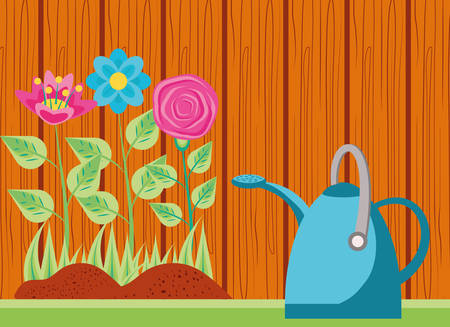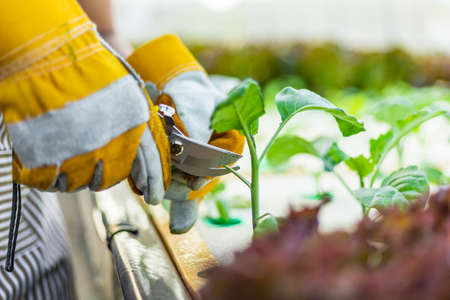1. Preparing Your Garden for the Summer Heat
As temperatures begin to rise, your garden needs a little extra love to thrive through the heat. Whether youre in the humid South, dry Southwest, or temperate Pacific Northwest, transitioning your spring garden into a summer-ready oasis starts with smart planning. Here’s how you can prepare your garden based on different U.S. climate zones.
Soil Preparation: The Foundation of a Healthy Summer Garden
Start by checking your soil’s moisture retention and nutrient levels. In most areas, spring rains may have compacted the soil, so loosening it with a garden fork can help roots breathe better. Adding compost or well-aged manure boosts fertility and helps retain moisture during hot spells.
Soil Tips by Region:
| Region | Soil Tip |
|---|---|
| Northeast & Midwest | Add compost to improve drainage and aeration after spring rains. |
| Southeast | Use pine bark mulch to reduce humidity-related fungal issues. |
| Southwest | Incorporate organic matter to retain precious moisture in sandy soils. |
| Pacific Northwest | Check for soggy spots and improve drainage before summer showers hit. |
Mulching: Keep Roots Cool and Moisture Locked In
A 2-3 inch layer of mulch around plants helps maintain even soil temperatures and reduces evaporation. Organic mulches like shredded bark, straw, or cocoa hulls also break down over time and enrich the soil. Make sure not to pile mulch against plant stems—it can cause rot.
Sun-Friendly Plant Placement
The intensity of sunlight varies across the U.S., so tailoring plant placement is key to preventing sunburn and stress. Consider grouping plants with similar sunlight needs together and using taller crops or shade cloth to protect sensitive varieties during peak hours.
Sunlight Planning Table:
| Climate Zone | Planting Strategy |
|---|---|
| Hot & Arid (e.g., Arizona) | Use shade cloth for leafy greens; plant heat-tolerant varieties like okra and eggplant. |
| Humid Subtropical (e.g., Florida) | Select mildew-resistant varieties and ensure good airflow between plants. |
| Mild Coastal (e.g., California Coast) | Maximize morning sun exposure; protect from intense afternoon rays with taller companion plants. |
Quick Tips for All Zones:
- Water early in the morning to reduce evaporation loss.
- Add drip irrigation or soaker hoses to maintain consistent moisture without wetting foliage.
- Watch for early signs of heat stress—wilting leaves, scorched edges—and act quickly.
A little preparation goes a long way in helping your garden survive—and thrive—through the hottest months of the year. By understanding your regional needs and adjusting accordingly, you’ll set your plants up for summer success.
2. Watering Wisely During Dry Months
Keeping your garden healthy during the hot, dry summer months in the U.S. takes more than just turning on the hose. Smart watering can help you conserve water, save money, and prevent your plants from drying out. Here’s how to do it right.
Establish an Efficient Watering Schedule
Creating a regular watering routine helps your plants grow strong and adapt to summer heat. Overwatering or inconsistent watering can lead to weak roots and stressed plants. Stick to a schedule based on your region’s climate and plant needs.
| U.S. Region | Watering Frequency |
|---|---|
| Southwest (e.g., Arizona, New Mexico) | 2-3 times per week |
| Southeast (e.g., Florida, Georgia) | Every other day |
| Northeast & Midwest (e.g., New York, Illinois) | 1-2 times per week |
| Pacific Northwest (e.g., Washington, Oregon) | 1 time per week or as needed |
*Always adjust based on rainfall and soil moisture.*
The Best Time of Day to Water
The best time to water your garden is early in the morning—between 5 AM and 9 AM. This allows moisture to soak into the soil before the sun gets too strong. Avoid watering in the evening; wet foliage overnight can attract mold and pests.
Why Morning Watering Works Best:
- Lowers evaporation loss
- Keeps plants hydrated through the hottest part of the day
- Lowers risk of disease caused by lingering moisture
Use Drip Irrigation for Maximum Efficiency
If youre looking for a low-maintenance, water-saving solution, drip irrigation is a great choice. It delivers water directly to plant roots, minimizing waste and reducing weed growth.
Main Benefits of Drip Irrigation:
- Saves up to 50% more water than traditional sprinklers
- Lowers risk of fungal diseases by keeping leaves dry
- Easily customizable for different areas of your garden
You can install simple DIY drip kits from most garden centers or home improvement stores. Be sure to pair them with a timer for even more convenience.
By following these smart watering tips, youll keep your garden thriving all summer long while being kind to both your wallet and the environment.

3. Managing Pests and Common Summer Plant Diseases
Summer is peak season for both garden growth and pest problems in the U.S. Warmer temperatures, increased humidity, and longer days create ideal conditions for insects and plant diseases to thrive. Knowing how to spot issues early and treat them effectively can save your garden from serious damage.
Identifying Common Summer Garden Pests
Different regions in the U.S. face different pest challenges. Here are some common summer pests and where youre most likely to encounter them:
| Pest | Region | Plants Affected | Signs of Infestation |
|---|---|---|---|
| Aphids | Nationwide | Roses, vegetables, fruit trees | Sticky leaves, curled foliage, presence of ants |
| Japanese Beetles | Midwest & East Coast | Roses, beans, grapes, turfgrass | Skeletonized leaves, beetles visible on plants |
| Cabbage Loopers | Southeast & West Coast | Cabbage, broccoli, kale | Holes in leaves, green caterpillars present |
| Spider Mites | Southwest & Hot/Dry Areas | Tomatoes, peppers, ornamentals | Tiny webs on leaves, speckled or yellowing foliage |
| Squash Bugs | Nationwide (especially Midwest) | Zucchini, pumpkins, squash | Wilting vines, brown spots on leaves, egg clusters under leaves |
Eco-Friendly Pest Control Options
If you want to keep your garden thriving without using harsh chemicals, here are some sustainable pest control methods:
- Neem Oil: A natural pesticide that’s safe for vegetables and ornamental plants.
- Insecticidal Soap: Effective against soft-bodied insects like aphids and whiteflies.
- Diatomaceous Earth: A powder that dehydrates crawling insects like beetles and ants.
- Companion Planting: Grow marigolds or basil near tomatoes to deter pests naturally.
- Hand-Picking: For larger pests like beetles or caterpillars, manual removal can be effective.
- Beneficial Insects: Ladybugs and lacewings feed on harmful bugs like aphids and mites.
Common Fungal and Bacterial Diseases During Summer
| Disease Name | Affected Plants | Symptoms | Treatment/Prevention Tips |
|---|---|---|---|
| Powdery Mildew | Zucchini, cucumbers, roses | White powdery spots on leaves and stems | Avoid overhead watering; use sulfur-based sprays if needed. |
| Bacterial Wilt (caused by cucumber beetles) | Cucumbers, melons, squash | Sudden wilting of vines during the day, recovery at night (early stage) | Control cucumber beetles; remove infected plants promptly. |
| Early Blight (Tomatoes) | Tomatoes, potatoes | Circular dark spots with yellow halos on lower leaves | Avoid wetting foliage; apply copper fungicide as needed. |
| Bacterial Leaf Spot (Peppers) | Bell peppers, chili peppers | Water-soaked spots that turn brown or black on leaves and fruit | Avoid working in garden when plants are wet; remove affected leaves. |
| Downy Mildew (Basil) | Basil varieties (especially sweet basil) | Pale yellow patches on upper leaf surfaces; gray fuzz underneath leaves | Select resistant varieties; improve air circulation around plants. |
Preventative Measures That Work Across All Regions:
- Avoid Overwatering: Excess moisture encourages fungal growth. Water early in the morning at soil level instead of overhead watering.
- Crop Rotation: Don’t plant the same crops in the same spot every year. This reduces disease buildup in the soil.
- Adequate Spacing: Allow airflow between plants to reduce humidity levels that promote mildew and blight.
- Cleansing Tools: Always clean gardening tools after working with infected plants to prevent spreading bacteria or fungi.
Tackling pests and plant diseases doesn’t have to be overwhelming. With a little attention and regular monitoring, you can enjoy a healthy summer garden no matter which part of the U.S. you live in.
